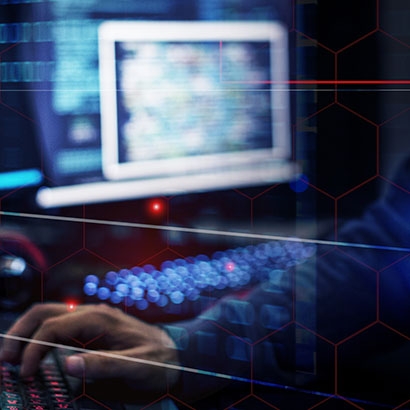What does the rapidly evolving commercialisation of space mean for investors?
As part of Morgan Stanley’s annual Australia Summit, Adam Jonas, Head of Morgan Stanley's Space and Global Auto & Shared Mobility, hosted an interesting dialogue on the highly topical theme of space innovation and commercialisation with Martin Duursma, Partner at Main Sequence Ventures at CSIRO.
The government-funded space race in the 1960s received great global attention. While the excitement may have diminished since then, today's space race is again attracting wide interest and increased visibility due to a confluence of profound technological change, accelerated capital formation and private space flight missions from the likes of Elon Musk and Jeff Bezos. Morgan Stanley believes space tourism is the ultimate advertisement for the realities and the possibilities of space to a broad audience. Many investors are beginning to pay attention to the space economy.
Adam Jones’s introduction of the session covered the vast size and potential of the space economy. Morgan Stanley Research estimates that the US$400 billion global space industry could surge to over US$1 trillion by 2040. The space economy can be divided into three principal domains: earth observation, transportation and communication, which all impact a broad group of industries such as insurance, mining, tourism, shipping, internet and semiconductors.
Bridging the gap to space
On the technology side, satellite launch cost has been collapsing. What used to cost US$500 million to launch now costs US$50 million. This is likely to reach single digit millions due to rocket reusability. Satellites are getting physically smaller and lighter too – which allows the industrialisation of satellites and antennas.
Martin believes now is the time of opportunity for venture capitals to invest in space. He stated space investment was previously the domain of large defence companies with government contracts, but now there is an opportunity for startups as technology advancements and smaller capital requirements have made space more accessible. While it is still intensive, the magnitude has changed.
"We have made investments in launch, connectivity, communications, earth observation and sensors – these are areas we see the opportunities. The space market is characterised by a lot of technology start-ups that have great ideas but we as a venture capitalist need to invest in businesses that have an end-to-end solution.” Martin said.
Investment in the Australian space sector
Martin thinks some people may be surprised at the level of innovation that is happening in Australia.
“Australia has had a rich history of having an early involvement in space community. Australia was a pioneer in radio astronomy technology in the 50s and 60s, which led to us being heavily involved in NASA and Apollo program.”
In November 1967 Australia became the third nation to launch a satellite from its own territory. Since that time, Australia has not seen much progression in the space sector.
“While we've been a strong consumer of space technology, we've brought that capacity from overseas providers. We haven't built an ecosystem of infrastructure and manufacturing in Australia, however we’re now starting to see the rise of the local space industry.
“Australia has natural advantages such as large open areas and we’re surrounded by water. This makes Australia a safe and secure place to launch.
“There are actually a couple of companies setting up launch facilities in Australia right now, which is bringing international companies into Australia who want to launch satellites due to our secure environment and stable economy.” Martin said.
Space technology can help from environmental perspective
With more investors focused on environment, social and governance (ESG) factors, satellite imagery is increasingly providing key data on the environmental impact of company activities.
One example Martin mentioned was the ability to monitor climate change.
“Trying to understand the impacts of climate change is what space is perfect for. To have the ability to have satellites doing observation around water management, gas emissions and weather monitoring can be powerful. From Australian context, there's opportunities for us to be a major player in this area.”
Is space junk an issue for space safety?
As space becomes more congested, the threat of “space junk”—orbital debris from old spacecraft and satellites—to new satellites and rocket launches has grown. Some government agencies now struggle to track this orbital debris, creating potential demand for private companies to monitor and manage this potentially catastrophic space waste.
Thousands of satellites have been launched over 50 years which has left a lot of fragments floating in space.
Martin mentioned orbital debris is the largest threat for space industry growth for the next 10 years. However, he mentioned new regulations are appearing, where if you launch a satellite you have to de-orbit it. He also predicts there are commercial opportunities to clean up space.
Why put people in space?
Space tourism, while a small market, helps to raise public awareness and support and it can serve as an innovation catalyst – creating an infectious enthusiasm around space.
Why do we do space exploration? Martin mentioned putting humans in space is what led to a whole lot of innovation.
“By putting humans in a different environment, we actually learn a lot more about humans and it forces us to innovate from a medical perspective.
“Every time we have launched the probes into our solar system, we have learned something unexpected. We learn so much about how things work and who we are.” Martin said.
Advice for investors who want to invest in the space domain
Martin recommends partnering with knowledgeable co-investors who can share ideas and knowledge.
He also highlighted the importance of focusing on the business model instead of getting too excited about the new technology.
There are a lot of space startups that are characterised by strong technologists with great ideas. But what is the monetisation of that in a space context? What is the viability of how they want to make money? What are the market dynamics? Who are the end consumers?
Martin believes the key is to look for companies with and end to end solution and where you can see ultimately see a path to significant revenue stream.
For more from Morgan Stanley’s Australia Summit and insights into disruption, speak to your Morgan Stanley financial adviser or representative.



